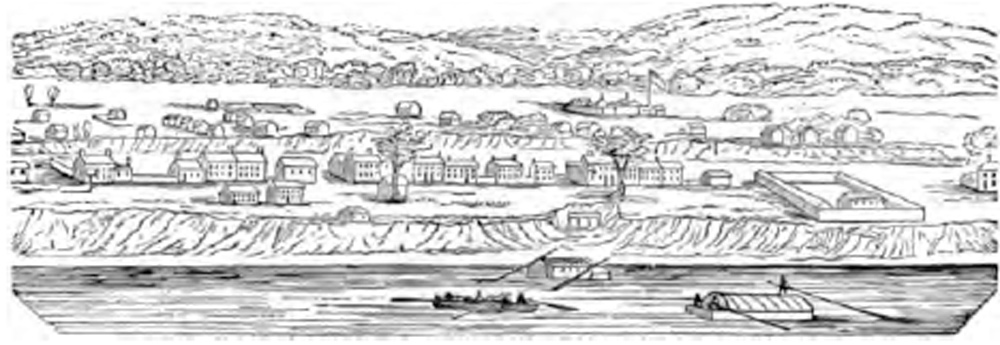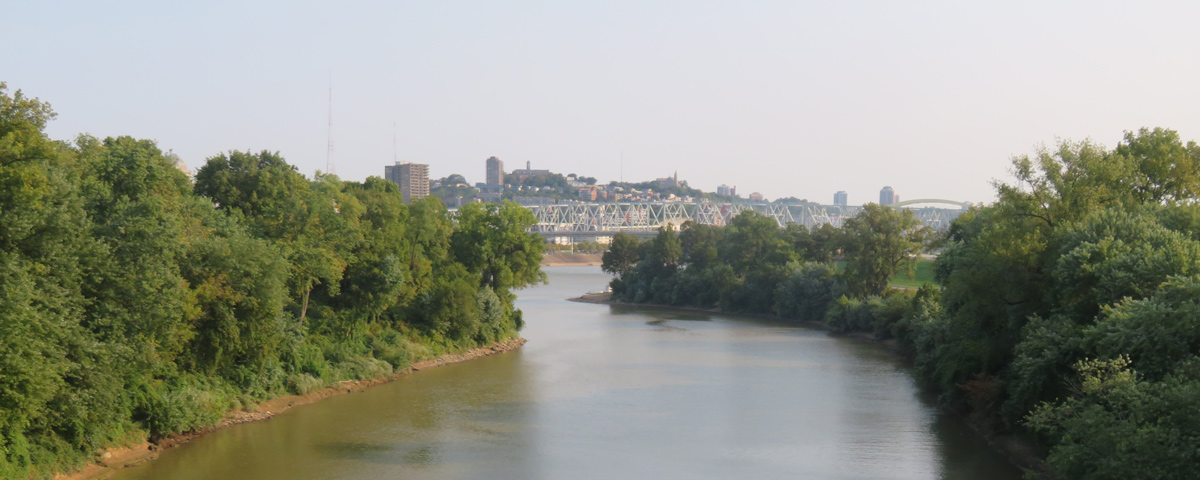Lewis arrives in Cincinnati, Ohio where he rests his crew and writes letters to President Jefferson and William Clark. He tells Jefferson he has come 500 miles and tells Clark that he has two recruits that may be suitable for the expedition.
Five Hundred Miles
Cincinnati, October 3rd 1803.
Dear Sir [Thomas Jefferson],
I reached this place on the 28th Ult; it being necessary to take in a further supply of provisions here, and finding my men much fatiegued with the labour to which they have been subjected in descending the river, I determined to recruit them by giving them a short respite of a few days, having now obtained the distance of five hundred miles.
MERIWETHER LEWIS. Capt.
1st. U.S. Regt. Infty.[1]Donald Jackson, ed. Letters of the Lewis and Clark Expedition with Related Documents: 1783-1854, 2nd ed., (Urbana: University of Illinois Press, 1978), 126.
In the lexicon of that day, to recruit meant “to recuperate or allow to recuperate.”[2]Alan H. Hartley, Lewis & Clark Lexicon of Discovery (Pullman, WA: WSU Press, 2004), 143. The term was also used on 10 July 1804 and 30 September 1805.
Two Recruits
Cincinnati Sept. 28th 1803.
Dear Clark,
I have two young men with me whom I have taken on trial and have not yet engaged them, but conditionally only, tho’ I think they will answer tolerably well.
MERIWETHER LEWIS.[3]Jackson, 125.
Above: The Licking River flows into the Ohio at Cincinnati.
Ohio River at Cincinnati
Henry Howe gives a description of the Ohio River at Cincinnati before major locks and dams:
The Ohio river at Cincinnati is 1,800 feet, or about one-third of a mile wide, and its mean annual range from low to high water is about 50 feet; the extreme range may be about 10 feet more. The greatest depressions are generally in August, September, and October, and the greatest rise in December, March, May, and June. The upward navigation is generally suspended by floating ice for eight or ten weeks in the winter. Its current at its, mean height is about three miles an hour; when higher and rising, it is more; and, when very low, it does not exceed two miles.
—Henry Howe[4]Henry Howe, Historical Collections of Ohio in Three Volumes (Columbus: Henry Howe & Son, 1891), 2:33.
Experience the Lewis and Clark Trail
The Lewis and Clark Trail Experience—our sister site at lewisandclark.travel—connects the world to people and places on the Lewis and Clark Trail.
Plan a trip related to September 28, 1803:

Notes
| ↑1 | Donald Jackson, ed. Letters of the Lewis and Clark Expedition with Related Documents: 1783-1854, 2nd ed., (Urbana: University of Illinois Press, 1978), 126. |
|---|---|
| ↑2 | Alan H. Hartley, Lewis & Clark Lexicon of Discovery (Pullman, WA: WSU Press, 2004), 143. |
| ↑3 | Jackson, 125. |
| ↑4 | Henry Howe, Historical Collections of Ohio in Three Volumes (Columbus: Henry Howe & Son, 1891), 2:33. |


